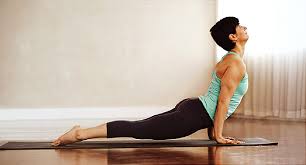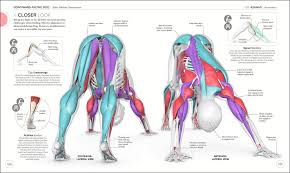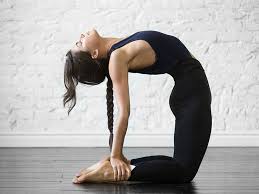A personal new passion that has come about lately has been the practice of yoga. I love the fluid movements, both calm and strengthening, and the daily focus that comes with it. It is widely known that yoga has certain benefits-both mental and physical-including reduced stress levels, a greater ability to focus, increased balance and strength, and improved flexibility and range of motion.

This science behind this last one is quite interesting. There are scientifically proven ways that regular stretching and yoga can increase your flexibility. But first, let me give a quick overview on how flexibility in general works.
Ligaments connect bones to each other, and tendons connect bones to muscles. Both are made mainly of collagen, a protein that, depending on which type a person has, can help a person to be more or less flexible. Type 1 collagen is stronger and sturdier, whereas Type 3 is more flexible. Some people also have a protein called elastin in their ligaments and tendons that is extremely stretchy. Whatever mix of collagen types a person has helps determine natural flexibility. All of this is explained in this video.

Now, as to stretching actually helping you to become more flexible, one of the most short-term ways this happens is that your muscles gain a larger water content, causing more elasticity. You can also-through regular stretching-cause stem cells in your ligaments and tendons to grow and separate into more cells and create more of proteins such as the collagen that is what most of your ligaments and tendons are made of. Another way to increase flexibility-which sounds somewhat ridiculous-is by simply desensitizing yourself to pain. If you stretch often enough, you will not feel the pain of it anymore and will be able to more comfortably stretch in new ways. Stretching also lengthens the muscle fibers, adding more material on to them. Lastly, our muscles have a direct alpha-gamma loop with our spinal cord. When we stretch, the muscles send a signal directly to the spinal cord which sends another signal back-to contract. If you can loosen that alpha-gamma loop and cause it to be less responsive, your muscles will pull back on you less.

Now, as for how this ties directly to yoga. Through the practice of yoga, you stretch and strengthen your entire body through a variety of poses. With regular practice, being sure to pay attention to your breath and incorporate all different muscles, those muscles and their connective tissues will be regularly stretched, and you will gain the aforementioned benefits of stretching and overtime you will become more flexible.

In conclusion, certain poses as well as simple stretches can, over time, cause your joints and muscles to gain flexibility and a greater range of motion through consistency and greater elasticity in the collagen that connects your muscles and bones.
Written by Jessa Parfet

This is amazing—so well explained—I want you to become a yoga teacher and I want to take a class from you.